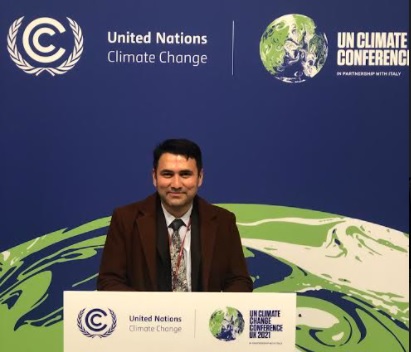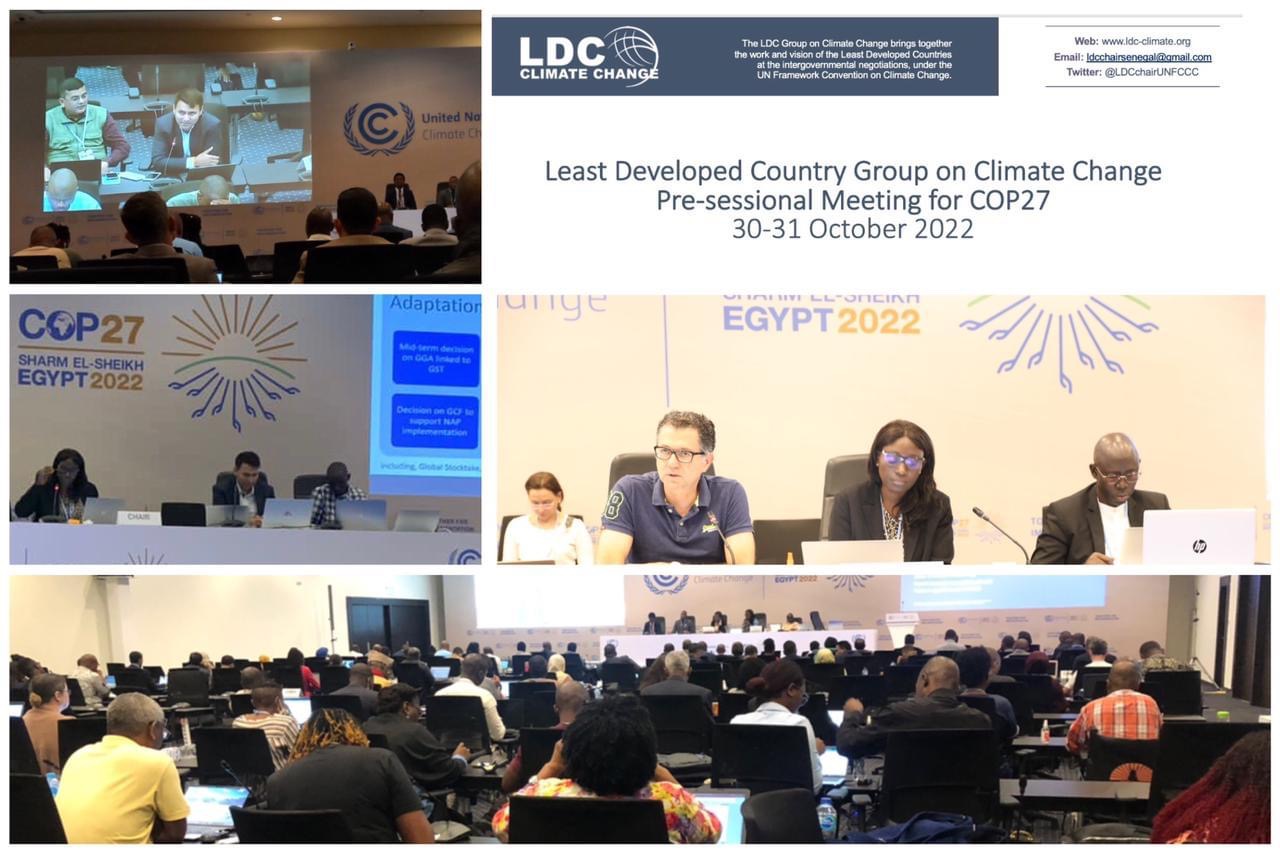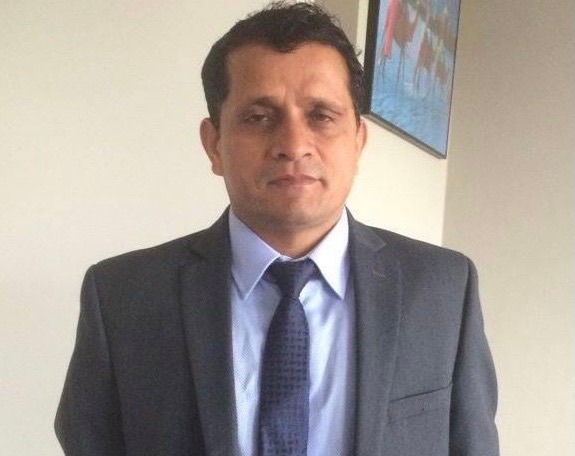COP26 delivered a mixed result for LDCs: Manjeet Dhakal

MANJEET DHAKAL is head of LDC Support Team at Climate Analytics. He serves as an Advisor to the Chair of the Least Developed Countries (LDC) Group at the multilateral process of the UNFCCC. As an advisor he has worked with Angola, Democratic Republic of Congo, Ethiopia and currently Bhutan, and provided high-level climate leadership support for the LDCs in climate change UN-related processes over many years and played a key part of the LDC efforts that led to the Paris Agreement in 2015. He is also associated with School of Environmental Science and Management, Pokhara University in Nepal as an Adjunct Associate Professor for climate diplomacy. Dhakal spoke to SOUTH ASIA TIME regarding the outcome of COP26 especially for LDCs. Excerpts of the interview:
What were the hits and misses at the COP26 in Glasgow, Scotland?
COP26 in Glasgow was an important milestone in the race to urgently address the climate emergency. I was particularly impressed with the engagement of young people, pressing world leaders for urgent action.
The centrepiece outcome of the COP26, the Glasgow Climate Pact, clearly recognises the emissions gap in 2030 between where our current climate policies will take us, and where we need to be. In response, a decision was taken that requests countries to revisit and strengthen the 2030 targets in their emission reduction plans to align with the 1.5°C goal of the Paris Agreement, by the end of 2022.
Critically, the Pact also called on developed countries to urgently mobilise finance to support vulnerable countries and to at least double the collective provision of climate finance for adaptation to developing country.
Glasgow was also successful in finalising the rulebook of the Paris Agreement. With this completed we can shift to focus on its implementation. It’s now time for countries to get to work to halve our emissions by 2030.
On Loss and Damage, Glasgow missed the opportunity to address the real need to establish dedicated finance and support for those places already suffering from the impacts of climate change. This remains crucial for the most vulnerable countries and we expect pressure to address this will only increase in prominence as time goes on and these climate impacts worsen. Egypt, that is hosting next years’ COP27, has already indicated this will be a key issue of the next COP.
To what extent the issues raised by the Least Developed Countries (LDCs) were addressed during the COP26?
COP26 delivered a mixed result: some of our key concerns have been addressed, whereas a few others remain pending in the negotiations.
There was a positive outcome in addressing the call for urgency in reduction of emissions in line with 1.5°C this decade. This is particularly important for LDCs, because if emissions are not rapidly reduced in this decade, this will expose the most vulnerable countries to unacceptable levels of risk and impacts.
We also saw some positive outcomes on climate finance, such as doubling adaptation finance for developing countries, and a process launched to define a new collective finance goal for post 2025.
Outside the negotiations, US$413 million of new funding was pledged for the LDC Fund – a fund exclusively focused on building climate resilience.
However, the outcome on Loss and Damage, was a real disappointment. The outcome was not what we expected, as there was no agreement to establish a finance facility for loss and damage – a key ask from the LDC Group.
Glasgow also set rules for international carbon markets, reporting requirements and a common timeframe for countries’ national climate target submissions to the UN.
Finally, following the LDC’s call, COP26 launched a two-year Glasgow-Sharm el-Sheikh work programme on the global goal on adaptation with a view to enhancing adaptation action and support.
The LDCs have been on the receiving end of the climate impacts though they pollute far less than the richer countries. What will happen to the ‘Loss and Damage’ agenda now?
LDCs have been calling for urgent action to establish a finance facility to address those climate impacts that are now unavoidable and are already causing loss and damage in our countries. However, wealthy nations remain reluctant to make progress on this urgent matter.
In Glasgow, no agreement could be reached on establishing such a finance facility. There was some incremental progress with initial further steps to operationalise the Santiago Network on Loss and Damage, established in 2019 to catalyse technical assistance in countries particularly vulnerable to climate change. However, more work remains to fully operationalise the Santiago Network, and it is not designed to address the more fundamental need for financial resources to address loss and damage. The upcoming year will be critical to advance this important topic.
While we were unhappy with the outcome on loss and damage, the agreement to hold a dialogue on finance for loss and damagefrom next year through to 2024 means that this issue will not disappear from the climate negotiations. And importantly, as climate change progresses, we will not be able to ignore the very real and increasing impacts of loss and damage. This will be an extremely big area of work going forward and a key priority for LDCs.
Has there been any tangible progress towards achieving the target of limiting the global warming to 1.5 degree Celsius?
Limiting temperature to 1.5°C is a lifeline for the LDCs. LDCs disproportionately suffer from the ever-increasing impacts of climate change, despite contributing the least to global warming.
Despite global efforts, carbon emissions are still increasing, and if emissions are not rapidly reduced in this decade, this would expose the most vulnerable countries– particularly LDCs – to unacceptable levels of risk and impacts.
At COP26 there was a wider recognition of this emission gap, and acknowledgment that we are far from what science tells us we need to do – reduce emissions by 45% below 2010 levels by 2030.
This is why countries have agreed to revisit and submit strengthened targets by the end of next year. The success of COP26 in keeping 1.5°C alive will depend largely on how major emitters respond to this decision and come forward with more ambitious targets that are in line with 1.5°C.
The UN General Assembly (on 24th November) has adopted a resolution endorsing the graduation of Nepal, Bangladesh and Laos from the Least Developed Country (LDC) category with the preparatory period of five years. What is its significance? What challenges are these countries likely to face during the transition period?
The graduation of countries from the LDC category is an established process under the United Nations. Seven countries that are set for graduation in coming few years will have to go through difficult transitions, as these countries are already hard hit by the compounding effect of COVID-19 and climate crises, and may require adequate time to recover and stabilise their economies.
For millions of people in poor countries, Covid 19 has added new challenges in their livelihoods. What do you think needs to be done to deal with climate change in the so-called post-Covid world?
As the coronavirus pandemic has hit major sources of revenue, many LDCs – already economically weak – are struggling to balance their books and to allocate resources to fight the health crisis on top of other challenges. The COVID crisis affects work, business travel and lifestyles around the world and has exacted an unprecedented human toll as underprepared health systems struggle to cope and workers in lockdown lose their livelihoods. However, the insufficient infrastructure and fragile health systems make the situation in LDCs even more difficult.
For many LDCs, climate change makes this situation even more difficult. Even during the pandemic, climate change continues to threaten the health and safety of people in the LDCs. The coronavirus pandemic has forced vulnerable communities to deal with compounding crises concurrently.



















Facebook Comments